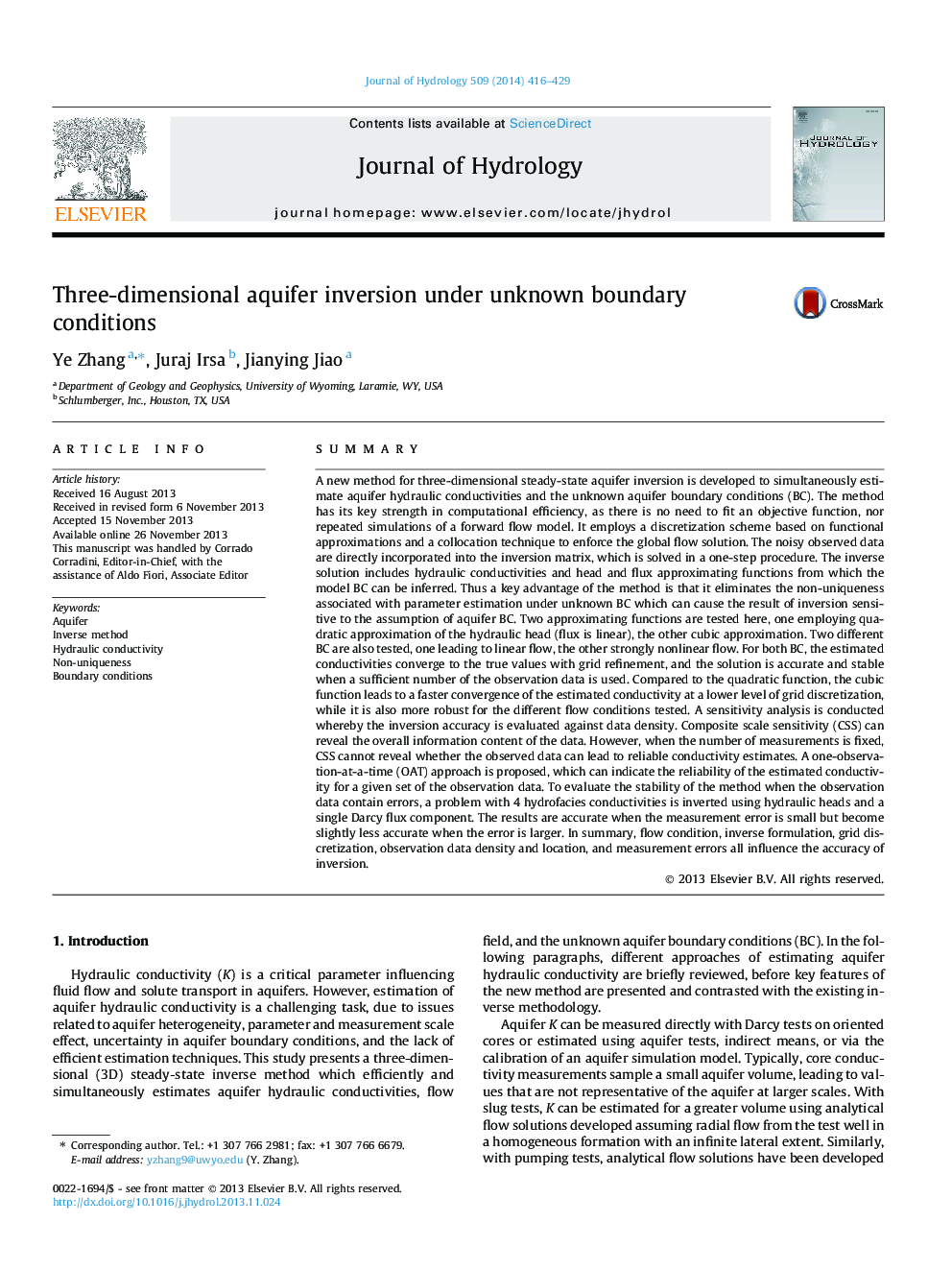| کد مقاله | کد نشریه | سال انتشار | مقاله انگلیسی | نسخه تمام متن |
|---|---|---|---|---|
| 6413452 | 1629939 | 2014 | 14 صفحه PDF | دانلود رایگان |
- Efficient direct method for steady-state inversion of three-dimensional confined aquifer.
- Simultaneous estimation of hydraulic conductivities, flow, and unknown boundary conditions.
- Flow condition, grid, observed data (density, location, error) influence inversion accuracy.
SummaryA new method for three-dimensional steady-state aquifer inversion is developed to simultaneously estimate aquifer hydraulic conductivities and the unknown aquifer boundary conditions (BC). The method has its key strength in computational efficiency, as there is no need to fit an objective function, nor repeated simulations of a forward flow model. It employs a discretization scheme based on functional approximations and a collocation technique to enforce the global flow solution. The noisy observed data are directly incorporated into the inversion matrix, which is solved in a one-step procedure. The inverse solution includes hydraulic conductivities and head and flux approximating functions from which the model BC can be inferred. Thus a key advantage of the method is that it eliminates the non-uniqueness associated with parameter estimation under unknown BC which can cause the result of inversion sensitive to the assumption of aquifer BC. Two approximating functions are tested here, one employing quadratic approximation of the hydraulic head (flux is linear), the other cubic approximation. Two different BC are also tested, one leading to linear flow, the other strongly nonlinear flow. For both BC, the estimated conductivities converge to the true values with grid refinement, and the solution is accurate and stable when a sufficient number of the observation data is used. Compared to the quadratic function, the cubic function leads to a faster convergence of the estimated conductivity at a lower level of grid discretization, while it is also more robust for the different flow conditions tested. A sensitivity analysis is conducted whereby the inversion accuracy is evaluated against data density. Composite scale sensitivity (CSS) can reveal the overall information content of the data. However, when the number of measurements is fixed, CSS cannot reveal whether the observed data can lead to reliable conductivity estimates. A one-observation-at-a-time (OAT) approach is proposed, which can indicate the reliability of the estimated conductivity for a given set of the observation data. To evaluate the stability of the method when the observation data contain errors, a problem with 4 hydrofacies conductivities is inverted using hydraulic heads and a single Darcy flux component. The results are accurate when the measurement error is small but become slightly less accurate when the error is larger. In summary, flow condition, inverse formulation, grid discretization, observation data density and location, and measurement errors all influence the accuracy of inversion.
Journal: Journal of Hydrology - Volume 509, 13 February 2014, Pages 416-429
